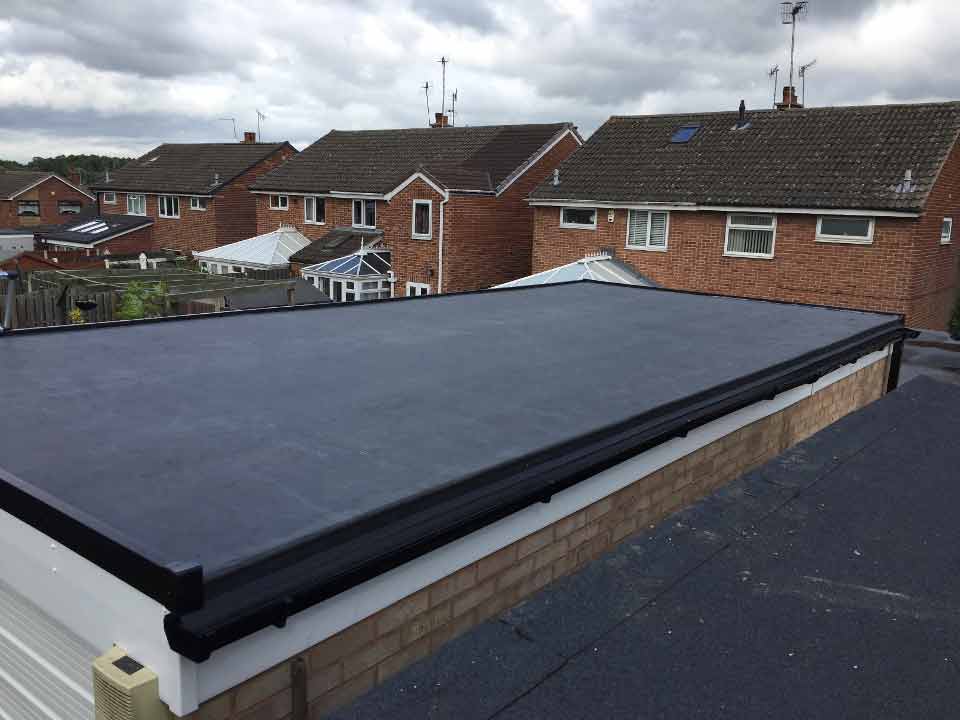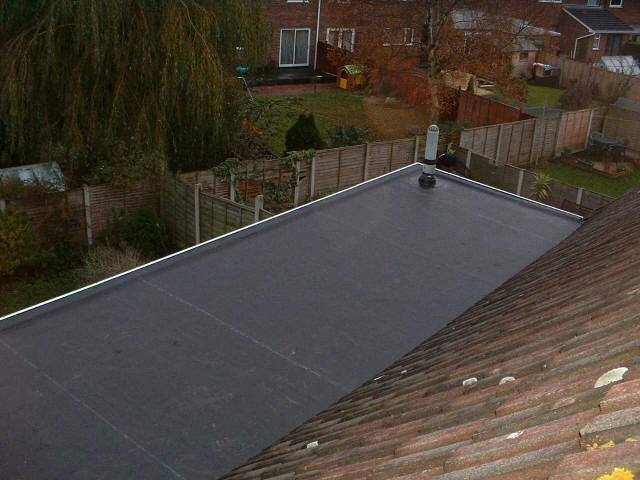The roof is arguably the most important part of a home. It provides shelter and protection from the elements, and it’s critical that it is kept in good condition.
One type of roofing system that has become increasingly popular is flat roofs, but are they as reliable as pitched roofs when it comes to preventing leaks? In this article, we will explore this topic in greater detail to help you make an informed decision on which type of roofing system is right for you.
Flat roofs have come a long way in recent years, with many modern construction techniques improving their reliability considerably. However, there are still some unique challenges associated with flat roof designs that can lead to potential leakage issues if not correctly addressed.
We’ll take a closer look at these challenges here and discuss some strategies for avoiding them altogether.
Benefits Of Flat Roofs
Flat roofs are an increasingly popular roofing option for both residential and commercial buildings. The cost effectiveness, aesthetic appeal, insulation benefits, environmental friendliness, and low maintenance requirements make them a great choice for those looking to upgrade their roofs.
For starters, the cost of materials used for flat roofs is significantly lower than other roofing options.
Additionally, they offer a unique aesthetic appeal that makes them stand out from traditional pitched roofs.
An added benefit of flat roofs is their ability to insulate your home or building more effectively due to increased air pockets.
This not only helps keep energy costs down but also reduces your carbon footprint.
Furthermore, since they don’t have complex structures like pitched roofs do, they require much less maintenance over time which saves you money in the long run.
With all these advantages in mind, it’s easy to see why flat roofs are becoming increasingly popular amongst homeowners and businesses alike.
Transitions aside, it’s important to remember that flat roofs aren’t perfect; there are some potential drawbacks that must be considered when making this decision as well.

Disadvantages Of Flat Roofs
Despite the numerous advantages of flat roofs, there are also some major disadvantages that must be taken into consideration.
High maintenance costs, a short lifespan, poor insulation, limited drainage, and inconsistent repairs can all contribute to the overall cost of owning a flat roof.
It is not uncommon for flat roofs to require frequent repair work due to their propensity for leakage. Poor installation or inadequate maintenance can also cause problems down the road.
Even if correctly installed and regularly maintained, flat roofs may still experience leakage problems due to factors such as excessive moisture or extreme weather conditions.
To avoid such issues it is important to take proactive steps to ensure the roof remains in good condition. Such measures include regular inspections and preventative maintenance tasks like clearing debris from gutters and drains.
As with any roofing system, proper installation and ongoing maintenance are key components of preventing future leakage in flat roofs.
Factors That Can Affect Leakage In Flat Roofs
Flat roofs can be more susceptible to leakage if certain factors are not taken into consideration.
One of the most important factors for flat roofs is the choice of waterproofing materials. These materials must be durable and reliable, able to withstand extreme temperatures and weather conditions.
It’s also important to ensure that a proper drainage system is installed, as it can help direct rainwater away from the roof and reduce the likelihood of leaks.
Additionally, having overhanging eaves can help protect the roof from water damage caused by heavy rainfall or snowfall.
Insulation levels should also be taken into consideration when installing a flat roof, as this will help keep air temperatures even and prevent condensation from accumulating on the interior surface.
Furthermore, good air ventilation is essential for maintaining a healthy roof system, as it helps dissipate trapped moisture before it can cause damage.
All in all, these considerations must be taken into account when constructing a flat roof in order to minimize the chances of leakage.
To get the best results, it is recommended to consult with a professional roofing expert or consultant who understands how each factor affects water tightness in flat roofs.
Tips For Improving Water Tightness In Flat Roofs
I’m always a big proponent of proper insulation when it comes to flat roofs – the insulation helps to keep the roof sealed and protects it from any water damage.
Quality materials are also key – you want to make sure you’re using materials that will last and that won’t be prone to leaking.
Regular maintenance is also critical – you should have your flat roof inspected at least once a year to ensure its in good condition.
If any issues are spotted, they can be addressed right away to prevent any further damage.
All of these things taken together can really help improve the water tightness of your flat roof.
Proper Insulation
Do you have a flat roof and want to make sure it’s safe from water damage?
Proper insulation is an essential part of ensuring your roof remains watertight. Without proper insulation, your roof will not be able to resist potential water damage due to weather changes.
The key to success is proper drainage, using the right flat roofing materials, and thermal control. When done correctly, these materials can keep your roof in top condition for years.
Additionally, regular maintenance and weatherproofing are important for keeping your flat roof in its best state of repair.
So don’t forget, when it comes to maintaining a healthy flat roof – proper insulation is vital! Investing in the right materials and hiring experienced professionals can help protect your home from costly damages due to water leaks.
Quality Materials
When it comes to improving the water tightness of your flat roof, quality materials and installation techniques are essential.
Weatherproofing and waterproofing methods should be used to ensure that all seams and joints are properly sealed, while insulation layers should be added to improve thermal control.
Additionally, maintenance schedules should also be followed in order to keep your roof in top condition for years.
With the right materials and proper installation, you can rest assured that your roof will remain watertight for many years to come.
And although investing in quality materials may appear costly upfront, it will save you money in the long run by preventing costly repairs due to water damage.
So don’t take shortcuts when it comes to protecting your home – invest in quality materials now for peace of mind later!
Regular Maintenance
Regular maintenance is key in ensuring your flat roof remains watertight for years to come.
Things such as dampness prevention, insulation inspection, reapplication of waterproof coating, and ventilation upgrades should all be regularly checked and done if needed.
Proper installation is also essential – you must ensure that all seams and joints are properly sealed with the right materials and techniques.
Investing in quality materials upfront will save you money down the line by preventing costly repairs due to water damage.
So don’t delay – prioritize regular maintenance on your roof today!
Frequently Asked Questions
What Type Of Roofing Material Is Best For Flat Roofs?
When selecting the right roofing material for flat roofs, it’s best to opt for a single ply membrane, built up roof, spray foam, metal roofing or waterproofing sealant. Not only are these materials highly effective at preventing leaks, they are also easy to install and maintain.
As a roofing expert or consultant, I recommend investing in one of these options depending on your specific needs and budget. Single ply membrane offers great waterproof protection while spray foam is more suitable for extreme weather conditions.
Built up roofs provide excellent insulation and metal roofs can last for decades with the right maintenance. Finally, waterproofing sealants can be used to protect any type of flat roof from potential water damage.
How Often Should Flat Roofs Be Inspected For Leaks?
Preventative maintenance is key when it comes to ensuring flat roof longevity and leak prevention.
To properly maintain a flat roof, regular inspections are recommended. These inspections should be done yearly if possible; however, more frequent inspections may be necessary depending on the type of materials used, drainage systems in place, and waterproofing methods employed.
Inspections should include checking the reflective coatings, insulation materials, and any other components that could potentially lead to leaks over time.
By taking these preventative measures, you can dramatically reduce the risk of experiencing costly repair work due to a leaking flat roof.
Are Flat Roofs More Expensive Than Other Types Of Roofs?
When comparing the cost of flat roofs to other types of roofs, there are several factors to consider.
The waterproofing materials, installation techniques, roof insulation, roof drainage and membrane systems used all have an effect on the cost of a flat roof.
Generally speaking, if you want a high quality and long-lasting flat roof, then it is likely to be more expensive than a less-reliable option.
However, if you opt for innovative waterproofing materials and proper installation techniques with adequate insulation and proper drainage system design, then you can save money in the long run.

Are Flat Roofs Suitable For All Climates?
Flat roofs can be very suitable for all climates, provided they are properly climate proofed and kept in good repair.
This includes waterproofing coatings and regular preventative maintenance to ensure their cost effectiveness over the long term.
It is also important to consider the installation methods used, as some materials may not be able to stand up to certain climates.
A roofing expert or roofing consultant should be consulted to evaluate your individual needs before deciding on a specific roof type.
Conclusion
Flat roofs are not necessarily more susceptible to leaks than other types of roofing, but they do require a bit more attention and care. With proper maintenance and inspection, flat roofs can last for many years without any problems.
The key is to be proactive and inspect your roof regularly. For example, if you have a flat roof in an area with heavy rainfall or snowfall, then you should inspect it at least once or twice a year.
By taking the time to choose the right roofing material and keeping up with routine inspections and repairs, you can ensure that your flat roof will remain leak-free for many years to come.
When it comes to protecting your home from leaks and water damage, there’s no substitute for a well-maintained flat roof.
Call us to get a price quote. Contact us today on 0115 736 5995 to receive a free quote or visit our website.
